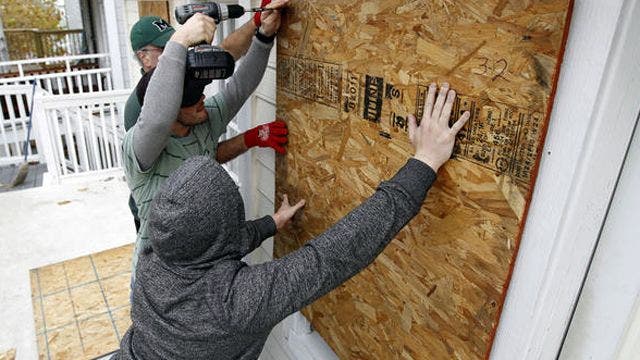Millions across East Coast brace for 'Superstorm' Sandy, while NYC to close transit services
Published October 28, 2012
FoxNews.com
As tens of millions of people in the eastern third of the U.S. prepare for rainfall from Hurricane Sandy, New York Gov. Andrew Cuomo announced that the New York City will suspend its bus, subway and commuter rail service Sunday evening ahead of the storm.
“You don’t want to be over panicked and overly prepared, but you want to be prudent and do what’s necessary," Cuomo said, indicating that the transit system will close at 7 p.m. ET.
Cuomo also said that bridges and tunnels in the New York area will be closed on a case by case basis, and 1,100 National Guard troops will be deployed to the area, including 400 on Long Island and 200 in New York City.
The city closed the subways before Hurricane Irene last year, and a Columbia University study predicted that an Irene surge just 1 foot higher would have paralyzed lower Manhattan.
New York City Mayor Michael Bloomberg also announced the closure of all city schools for Monday and ordered mandatory evacuations of all low-lying areas. He urged residents in lower Manhattan to call 311 or visit the city's website for information on evacuation zones.
The warning from other officials to anyone who might be affected in the storm's path was simple: Be prepared and get out of the way. The storm is expected to bring a few days of rain, high winds and possibly heavy snow.
"We're looking at impact of greater than 50 to 60 million people," said Louis Uccellini, head of environmental prediction for the National Oceanic and Atmospheric Administration.
Hurricane Sandy was headed north from the Caribbean, where it left nearly five dozen dead, to meet a winter storm and a cold front, plus high tides from a full moon, and experts said the rare hybrid storm that results will cause havoc over 800 miles from the East Coast to the Great Lakes.
Read more: http://www.foxnews.com/weather/2012/10/28/millions-across-east-coast-brace-for-uperstorm-sandy/#ixzz2AbpBm5IG






No comments:
Post a Comment